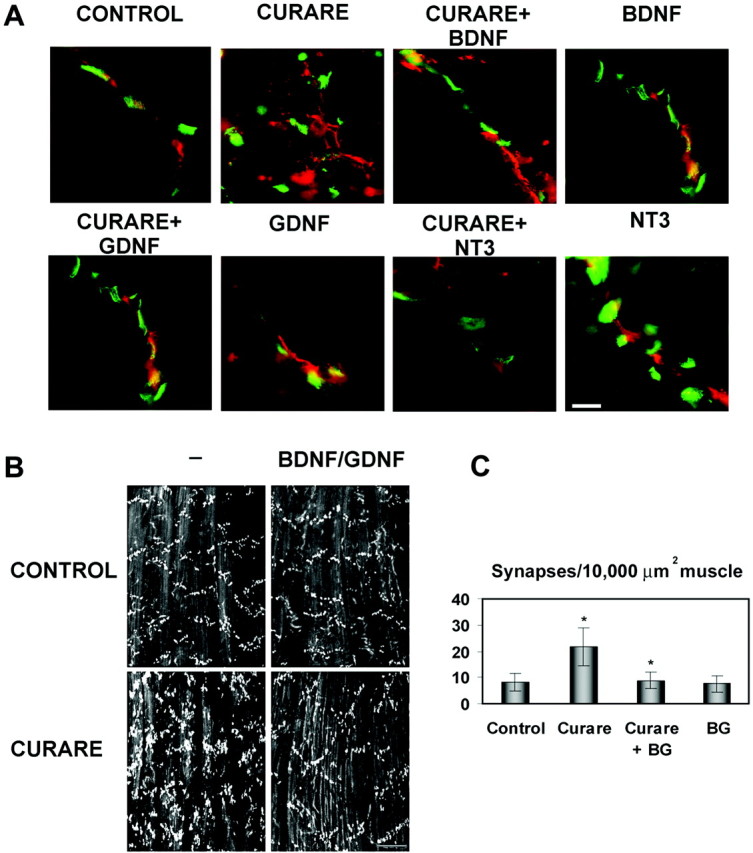Fig. 6.

Neurotrophic factors maintain normal end plate band architecture in the face of activity blockade. A, High-magnification views of synapses treated with saline (CONTROL), high-dose curare (CURARE), or high-dose curare plus BDNF, NT-3, or GDNF (1 μg/d) double-labeled with α-bungarotoxin (green) and neurofilaments and synaptic terminals (red) using a mixture of RT-97 and SV2 antibodies. This reveals that the increased number of smaller synapses seen with curare is attributable to excessive sprouting of the terminal axons and that this sprouting is suppressed by the coaddition of BDNF, NT-3, or GDNF. Scale bar, 10 μm. B, Examination of AChR patterns in ALD with α-bungarotoxin at lower magnification reveals that BDNF (2 ng/ml) plus GDNF (20 ng/ml) in the presence of paralytic doses of curare helps maintain a normal architecture. These factors given without curare had no effects. Scale bar, 100 μm. C, Quantitation of the number of AChR clusters per 10,000 μm2 revealed increased numbers with curare alone (as in Fig. 1) that normalized to control levels with BDNF and GDNF (BG). The density with curare treatment was significantly increased from controls (p= 0.010) and the curare with BDNF and GDNF treatment was significantly lower than with curare alone (p = 0.014).
